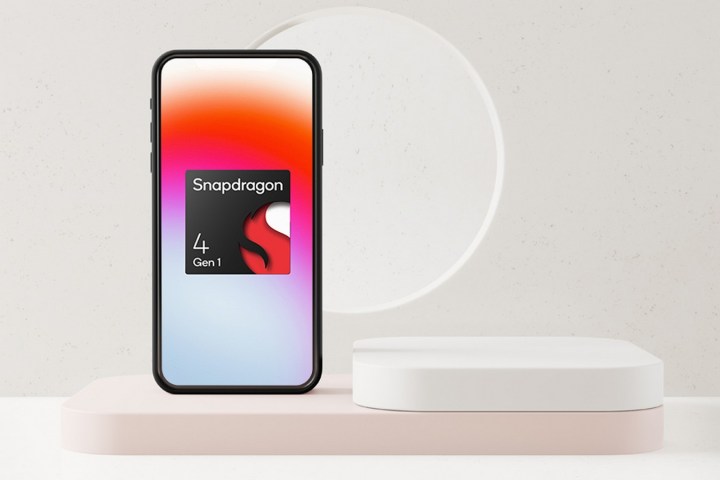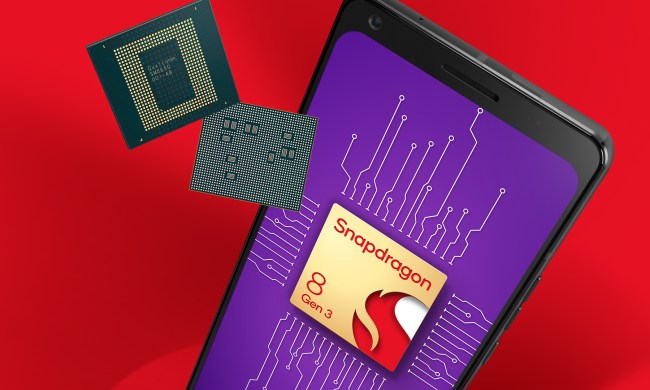Following in the footsteps of the Snapdragon 8 Gen 1, Qualcomm has today introduced two low-end mobile processors that add the “Gen” naming mantra to the Snapdragon 400 and 600 series. Alongside a few notable upgrades in the camera and connectivity departments, Qualcomm’s latest chips have a lot going for them.
Qualcomm Snapdragon 6 Gen 1
First in line is the Snapdragon 6 Gen 1, which takes over the mid-tier reins from the Snapdragon 695. Interestingly, this chip is based on the 4nm fabrication process, making it one of the first non-flagship mobile processors to rely on the 4nm die that offers better performance and higher energy efficiency. In comparison, Apple’s A15 Bionic inside the iPhone 13 series is based on TSMC’s 5nm process.
Qualcomm claims that the Snapdragon 6 Gen 1 is the first chip in the series to bring computational HDR video capture chops to the table. It’s also the first in the family to get the new 7th Gen AI engine that brings a 3x performance uptake for AI and ML-based tasks. Motorola is among the first brands to embrace the new Qualcomm chip, while phones powered by it will hit the shelves early next year.

Coming to the raw performance figures, the new custom Kryo CPU cores offer a massive 40% gain. On the graphics side of things, the updated GPU takes things a notch higher with up to a 35% uptick. This chip is also capable of HDR gaming, which means even midrange phones will now allow users to play games like PUBG: Mobile with the visual preset set to HDR.
The next-gen Snapdragon X62 5G Modem-RF System is said to reach a peak downlink speed of 2.9 Gbps, while the in-house FastConnect 6700 connectivity module brings Wi-Fi 6E support to the package. This chip can power mid-rangers packing an FHD+ display with up to 120Hz refresh rate and up to 12GB of fast LPDDR5 RAM ticking under the hood.
In the imaging department, the Snapdragon 6 Gen 1’s triple ISP supports up to 200-megapixel photo capture. Interestingly, it is also the first chipset in the family to enable video capture with HDR magic on top. For fans of low-light photography, AI De-Noising (AIDE) has been added to the mix to reduce noise in low-light pictures and deliver less grainy images with more discernible details.
Qualcomm Snapdragon 4 Gen 1
Next up is the entry-level Snapdragon 4 Gen 1, which succeeds the Snapdragon 480+ as Qualcomm’s best offering for budget Android phones. This one is the first in its series to support 108-megapixel image capture. Courtesy of the Triple ISP, it will also let phones capture stills and videos concurrently from all three rear cameras.
Just like the Snapdragon 6 Gen 1, the Snapdragon 4 Gen 1 supports the variable rate shading tech to deliver better quality graphics in mobile games. It can also power screens with a peak FHD+ resolution and 120Hz refresh rate, which is quite neat.

Talking about net generation-over-generation gains, the raw CPU performance has gone up by a modest 15%, while the graphics output also gets a 10% boost. Notably, Qualcomm is serving support for the in-house Quick Charge 4+ tech that is touted to fill up half the battery tank in just 15 minutes.
Bluetooth connectivity has been bumped up to the latest v5.2 standard, while music output gets support from the in-house Qualcomm Aqstic audio codec. Vivo off-shoot iQoo will launch the first phone powered by the Snapdragon 4 Gen 1 later this year. The wider market arrival of budget Android phones with the aforementioned chip will unfold in 2022’s third quarter.



